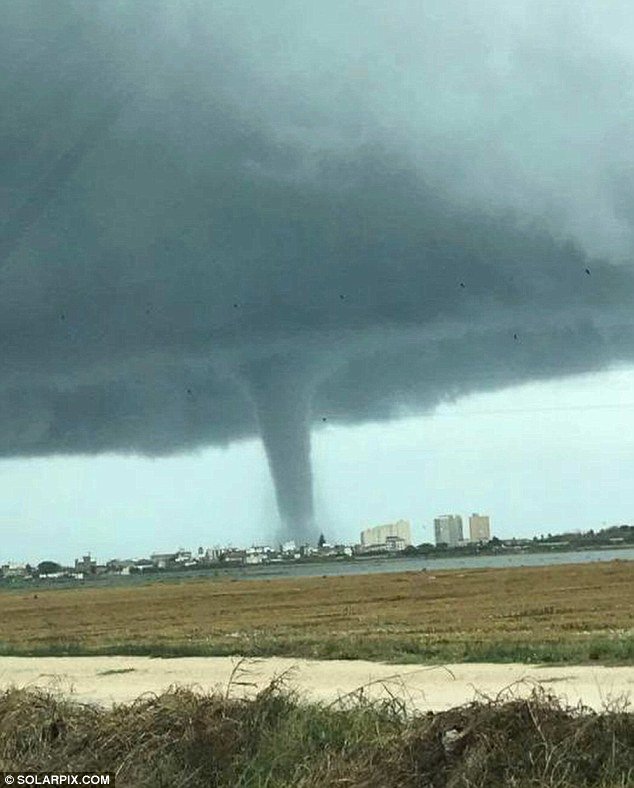
The waterspout, which was thought to have had a wind speed of around 50 miles per hour, veered off further into the sea instead of reaching land and becoming a devastating tornado on Sunday.
The massive column of water was spotted off coastal towns just north of Valencia including Sueca and El Perello shortly after 10am yesterday and preceded flash floods in the area.
Spain's State Meteorological Agency described it as one of the 'clearest and biggest' in the last decade in the area.
It preceded Valencia's worst storm since 2009 on Sunday afternoon, which meant several flights into and out of the city which were delayed or diverted elsewhere and led to the cancellation of the match between top-flight football sides Levante and Rayo Vallecano.
A local living in the tourist resort of Gandia near to where the waterspout originated, said: 'I live in Gandia and when I heard it was coming my way I literally sh#t myself.'
Tornadic waterspouts like the one spotted off eastern Spain are tornadoes that form over water or move from land to water.
They have the same characteristics as a land tornado and are associated with severe thunderstorms, high winds, large hail and dangerous lightning.
They are common in tropical and subtropical waters such as the Florida Keys but are not a regular occurrence off the coast of Spain.
In August locals in the Suffolk village of Thorpeness were treated to the sight of a waterspout.
The average spout is around 165 feet and their average speed of 50mph corresponds to the weakest type of tornado on land.
The largest waterspout can have diameters of 330 feet and last up to one hour, although the average lifetime is just five to 10 minutes.
Waterspouts are regarded as dangerous to swimmers and people on boats. They also pose a risk to aircraft. Helicopters flying near waterspouts can be damaged and thrown off-course.



Reader Comments
to our Newsletter